A Majestic Wanderer: Unveiling the World of the Sandhill Crane
The Sandhill Crane is a striking bird that graces the skies of North America and beyond. More than a visual spectacle, it plays vital roles in its ecosystems and holds a special place in human culture. This guide explores the Sandhill Crane’s life history, ecological importance, and conservation status.
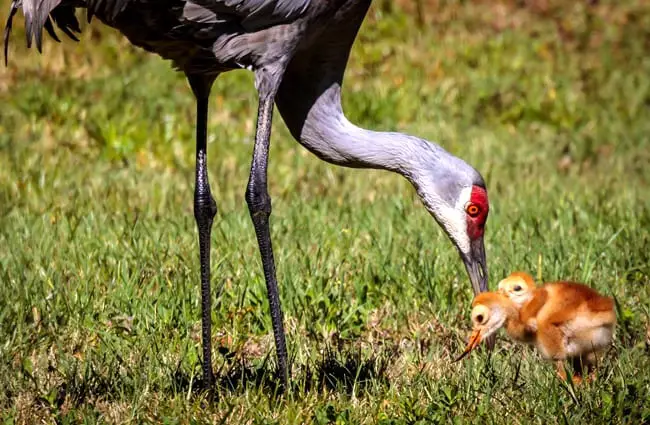
Basic Information and Identification
Sandhill Cranes are large, long‑legged birds that can stand 3 to 4 feet tall with a wingspan that typically reaches 5 to 6.5 feet. Their plumage is predominantly white with black flight feathers; the males have a pale yellow throat, a red patch on the forehead, and a dark, broad wing bar. Females are similar but generally lack the red forehead skin and have a slightly more muted coloration. Juveniles are brownish above and white below, with a darker breast band and a more mottled appearance. These features make them easily distinguishable from other long‑legged birds such as herons and egrets.
Habitat and Distribution
Sandhill Cranes thrive in a variety of wetland and grassland habitats. Historically, they ranged across much of North America, but habitat loss, especially in the prairie, and hunting pressures have reduced their distribution. Today, they are most common in the Great Plains, the Rocky Mountains, and the southeastern United States. They nest in open wetlands, marshes, and prairies, where they build large mounds of vegetation. During migration and winter, they gather in agricultural fields, grasslands, and shallow wetlands, often forming massive flocks.
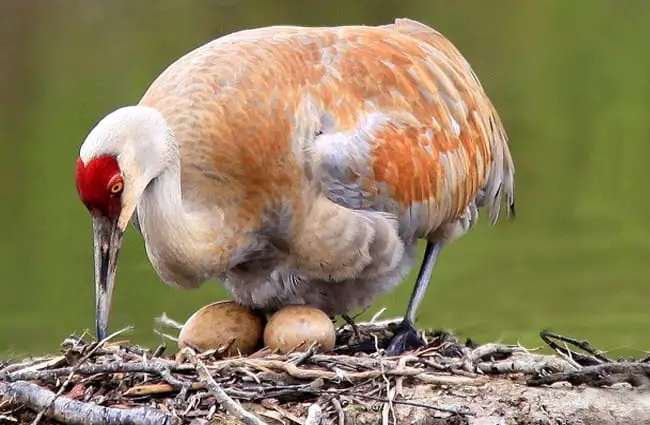
Diet and Foraging Behavior
Sandhill Cranes are omnivorous, eating a variety of foods that change with the seasons and habitat. They forage for grains, seeds, berries, insects, amphibians, reptiles, and small mammals. Their foraging is often communal, with flocks searching together. Using their long bills, they probe soil and vegetation for food, and a strong gizzard helps grind tough plant matter. During the breeding season, protein‑rich invertebrates are especially important.
Life Cycle: Reproduction and Development
Sandhill Cranes are typically monogamous, forming lifelong pair bonds. They perform elaborate courtship dances that involve intricate movements, vocalizations, and displays of plumage. Nesting usually takes place in wetlands, where the pair constructs a large mound of vegetation. The female lays two white eggs, which both parents incubate for about 30 days. The chicks are precocial—they can walk and forage soon after hatching—but remain dependent on their parents for several months. Young cranes reach sexual maturity at around three to five years of age.
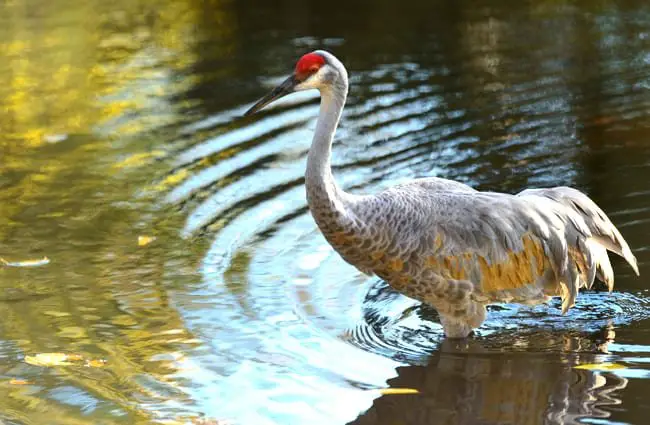
Migration and Flocking Behavior
Many Sandhill Crane populations are migratory, traveling hundreds or thousands of miles between breeding and wintering grounds along established flyways. During migration, they gather in large flocks that can number in the tens of thousands. These mass gatherings provide protection from predators and facilitate social interactions. The sight and sound of a great flock in flight are truly breathtaking. Cranes use thermals to gain altitude and reduce energy expenditure during long flights. The Platte River in Nebraska serves as a critical stopover point for many migrating Sandhill Cranes, providing essential foraging and resting habitat.
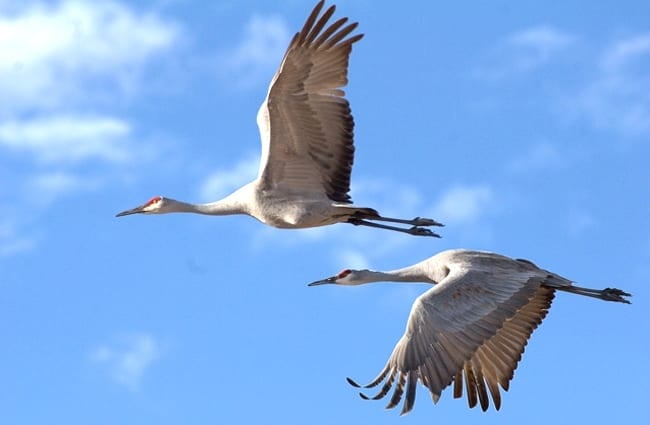
Ecological Role and Inter‑species Interactions
Sandhill Cranes contribute to their ecosystems by dispersing seeds and controlling insect populations. Their nesting activities can create small disturbances in wetlands that promote plant diversity. They are also prey for predators such as eagles, hawks, and coyotes, especially young cranes. Cranes often coexist with other waterfowl species, sharing habitat and resources. While they can sometimes compete for food, they generally maintain a stable coexistence. Their presence often signals a healthy wetland ecosystem.
Evolutionary History
Crane fossils indicate that crane-like birds existed millions of years ago. The lineage of the Sandhill Crane dates back to the Eocene epoch, making it one of the oldest living bird lineages. Evolutionary adaptations such as long legs, powerful wings, and a specialized digestive system have enabled cranes to thrive in diverse environments. Fossil evidence shows that cranes were once more widespread and diverse, with many extinct species. Phylogenetic studies place the Sandhill Crane in close relation to other crane species, including the Whooping Crane.
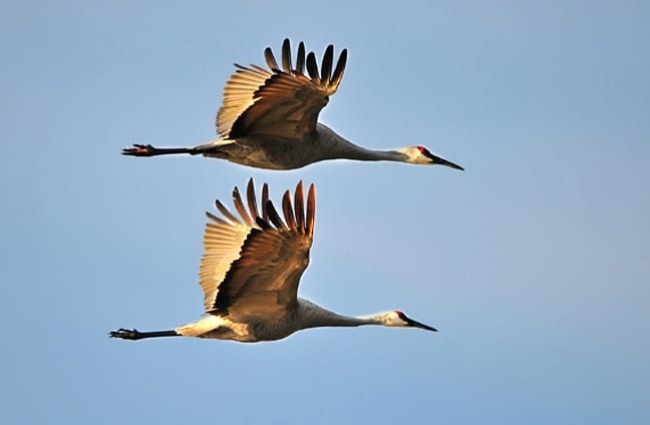
Sandhill Cranes and Human Interactions
Throughout history, Sandhill Cranes have held cultural significance for many Native American tribes. They appear in stories, dances, and ceremonies, symbolizing grace, longevity, and spiritual power. Historically, they were hunted for food and feathers, which led to population declines in some areas. Today, they are protected by law, and hunting is regulated to ensure sustainable populations. Nonetheless, they face threats from habitat loss, collisions with power lines, and lead poisoning from ingested shot. Conservation efforts such as wetland restoration and habitat protection are essential for their long‑term survival.
Encountering Sandhill Cranes in the Wild
If you are fortunate enough to encounter Sandhill Cranes in the wild, observe them from a respectful distance. Avoid approaching them directly, as this can cause stress and disrupt their behavior. Do not feed them, as this can alter their natural foraging patterns and create dependence on humans. If you are hiking, be mindful of nesting areas and avoid disturbing them. Report any injured or distressed cranes to your local wildlife agency. Remember that these are wild animals and should be treated with respect.
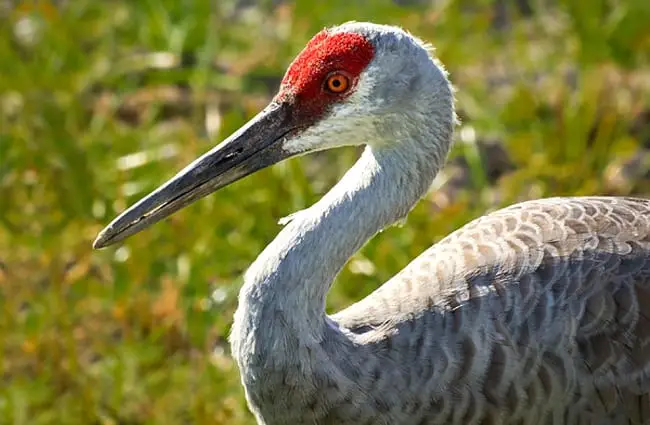
Caring for Sandhill Cranes in Captivity
For zookeepers and wildlife rehabilitators, caring for Sandhill Cranes requires specialized knowledge and attention. They need large enclosures that allow ample space to walk, run, and fly. Their diet should include a variety of grains, seeds, insects, and other nutritious foods. Regular veterinary care is essential to prevent and treat diseases. Enrichment activities, such as puzzle feeders and opportunities for social interaction, are important for their mental and physical well‑being. Avoid over‑handling them, as they are naturally wary of humans. Provide a clean and stimulating environment that mimics their natural habitat. Maintaining a strict biosecurity protocol is crucial to prevent the spread of disease.
The Sandhill Crane is a testament to the enduring power of nature. Its graceful flight, haunting calls, and ecological importance make it a truly remarkable species. By understanding and appreciating these magnificent birds, we can help ensure their survival for generations to come.

![Red Angus Closeup of a beautiful Red Angus cowPhoto by: U.S. Department of Agriculture [pubic domain]https://creativecommons.org/licenses/by/2.0/](https://animals.net/wp-content/uploads/2020/03/Red-Angus-4-238x178.jpg)




![Red Angus Closeup of a beautiful Red Angus cowPhoto by: U.S. Department of Agriculture [pubic domain]https://creativecommons.org/licenses/by/2.0/](https://animals.net/wp-content/uploads/2020/03/Red-Angus-4-100x75.jpg)

